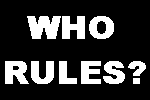
|
An Internet Guide to Power Structure Research |
|
| HOME
|
What is Power Structure Research? Power structure research is an approach to the study of power that highlights the unequal distribution of resources upon which power is based (e.g., wealth, political office, control of the mass media) and the importance of formal and informal social networks as the means by which power is concentrated and institutionalized. Modern power structure research has its roots in the radical social movements of the 1960s and 1970s. Building upon the pioneering work of sociologists like Floyd Hunter and C. Wright Mills, radical scholars of the era sought to debunk the prevailing myths about American democracy and to advance an alternative view of power in America. Not content merely to criticize the system, they took up the tools of empirical social science and used them to document the domination of big corporations and the upper class over American political life and to analyze the mechanisms by which that domination was maintained. The most important and widely read early work of power structure research was Who Rules America?, published by G. William Domhoff in 1967. The book has gone through five subsequent editions and the current edition, Who Rules America? Challenges to Corporate and Class Dominance (6th ed.), remains the best and most complete introduction to power structure research available today. (Click here to connect to the Who Rules America? website that accompanies the book.) Much power structure research is conducted by academic social scientists, although similar studies are often undertaken by independent scholars, investigative journalists, trade union researchers, and social movement activists. Until recently, most of the information needed to trace the webs of power in American society could be obtained only through extensive library and archival research, close monitoring of the press, searches of government records and documents, and interviews with knowledgeable insiders. These remain important sources of data for power structure research, but today much of the information previously obtained in these ways can now be acquired more quickly and easily on the Internet. This site provides a guide to resources for doing power structure research, including both those available on the Internet and those found elsewhere. Using these resources, you should be able to do such things as:
A few of the resources cited here are proprietary databases that are licensed to the University of Oregon. Online access to these resources is limited to students, faculty, and staff at the University of Oregon. However, identical or similar proprietary databases can be found at most college and university libraries as well as many public libraries. This site is divided into several sub-pages, organized by topic. Most pages have direct links to sources of data on the Internet. Please e-mail me if you have suggestions of important sources that have been omitted or other feedback on this site. Copyright © 2012 by Val Burris |
